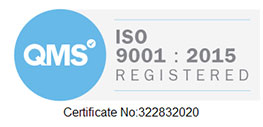G5.5 Harmonic studies are applicable to any plant that contains sources of harmonics, typically associated with Solar PV, Wind, Battery Storage and large industrial sites. The studies are primarily carried out to determine the level of harmonic emissions from a site and to identify any potential resonances and the need for mitigation strategies like harmonic filters. The new G5.5 standard requires assessment up to the 100th harmonic and is increasingly identifying problems with many sites and increasing the need for low harmonic emissions and harmonic filters. The new standard is now very closely aligned with the IEC 61000-3-6 standard, and has more generous harmonic limits, but they are based on apportionment, rather than absolute values.
Harmonic studies are split into two main areas. Stage 2 studies for systems connected at 6.6kV and 11kV – these are very similar in difficult and content to the old G5.4 process. Unless your a studies / harmonics nerd the process will be very similar to the whole approach you are probably familiar with.
Stage 3 studies are required for sites connected at 33kV and above (or for failed Stage 2 studies). As the method is now aligned with IEC 61000-3-6, which means there is much less exporting data and summating in Excel spreadsheets, but it is where things get difficult (or interesting depending on your perspective). They key difference is that the background DNO / TSO network is now represented by a series of frequency impedance data – this is either in the form of harmonic frequency dependent impedance tables or the more complex harmonic impedance loci. From a studies this is both good and bad – its good because it saves the huge amount of time needed for modelling the DNO network, as we had to do in G5.4 – but the bad news (particularly if using impedance loci), is that it involves using a lot of scripts to run multiple harmonic loadflow cases and it is much harder to spot what specific cases are causing the problems are and find solutions if the system doesn’t meet the emissions limit.
There are a couple of interesting things that have come out of G5.5. Firstly a lot of the DNOs are finding it tough (time consuming and expensive) to produce full harmonic impedance loci and specifications needed for a Stage 3 connection. Secondly we are seeing a lot more non-compliance issues, this is for a mixture of reasons – sometimes its because there is less headroom, but often it is in the higher orders and the switching frequency of the inverters causes exceedances around the usual suspect frequencies of 2.9kHz, 3.1kHz or 5.9kHz
- Stage 2A/2B/2C
- Stage 3
- Harmonic Loadflows
- Harmonic Frequency Sweeps
- Harmonic Filter Design
- Renewable Power
- EV Charging Stations
- Industrial Plants
If your interested in how Aurora can help – please get in touch!



